In 2001, Toyota started producing the Sequoia, a full-size SUV modeled after the Tundra pickup. It is Toyota’s second-largest SUV for sale in most markets and has had some reported issues with engine, interior, and exterior accessories depending on the model year of purchase. If you are considering purchasing one of these models, this information can help you decide which Toyota Sequoia Years To Avoid or which you can confidently invest in.
Toyota Sequoia Years To Avoid List

Multiple model years of the Toyota Sequoia have been released, but certain ones should be avoided. Most of these models are first-generation vehicles and do not provide the consistency owners desire. Researching different generations before purchasing is important to ensure you get a reliable and consistent vehicle.
A list of Toyota Sequoia years to avoid:
- 2001 Toyota Sequoia
- 2002 Toyota Sequoia
- 2003 Toyota Sequoia
- 2004 Toyota Sequoia
- 2005 Toyota Sequoia
The 2002 model year had the highest complaints and was the most costly to repair.
The 2002 Toyota Sequoia is considered one of the worst model years due to its high repair costs, low average miles before problems begin, and other various characteristics.
Why Avoid These Toyota Sequoia Years?
2001 Toyota Sequoia Common Problems
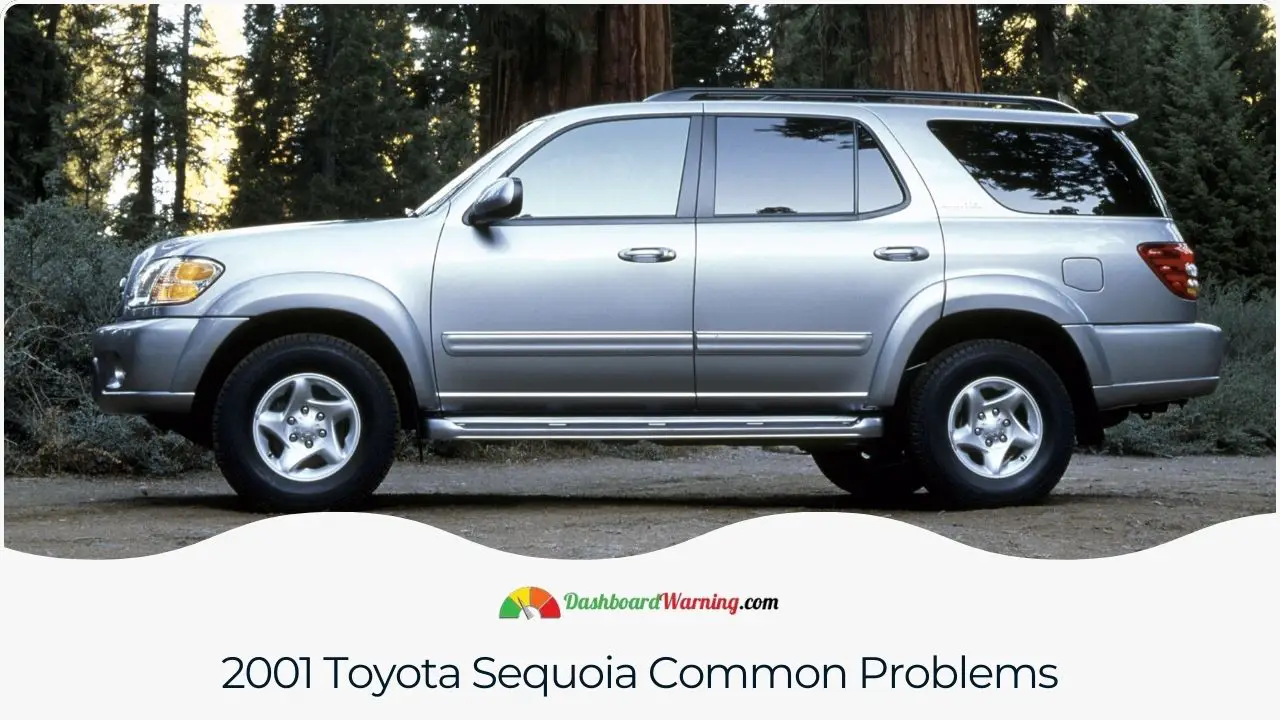
The 2001 Toyota Sequoia had several issues that affected the performance and longevity of its vehicles. Brakes were the primary concern, but customers also reported problems with steering and paint. According to reports, driving the car would sometimes jerk to one side unexpectedly, leading to serious accidents in some cases.
Additionally, corrosion was an issue that shortened the general lifespan of these cars. The traction control lights often kept coming on, confusing drivers who weren't sure why they kept happening. Furthermore, there have been reports indicating that stability assist systems malfunctioned frequently.
To ensure all their customers are safe while driving a 2001 Toyota Sequoia vehicle, Toyota has taken steps towards rectifying any potential issues through product recalls and offering replacement parts for those affected by any drawbacks or malfunctions associated with this model year's range of cars. Owners of these cars need to take precautionary measures to ensure their safety on the road - such as having regular maintenance checks done - to avoid any possible accidents due to faulty vehicle components.
Furthermore, the owner of this model-year vehicle reported the following problems:
- VSC Traction Control Engages for No Reason
- Back Hatch Latch Failure
- Transmission Failure
It is advised that Sequoia's model year be avoided to save money on repair expenses.
2002 Toyota Sequoia Common Problems
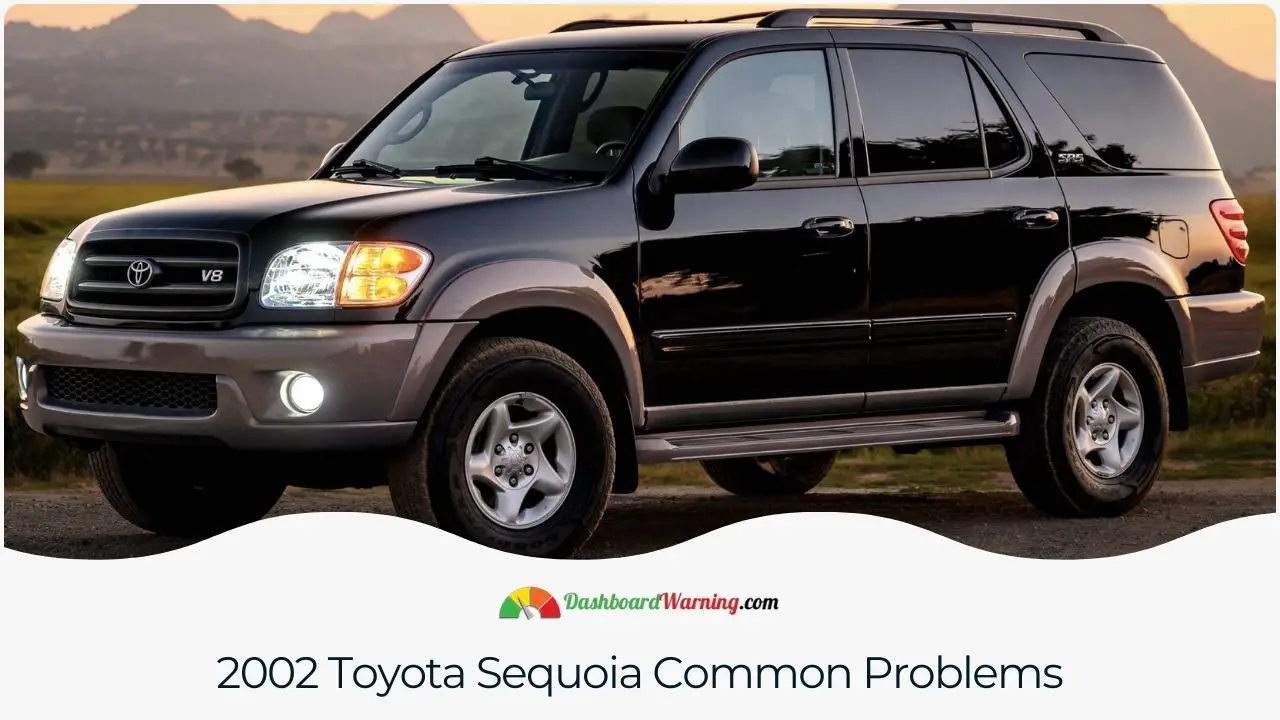
The 2002 Toyota Sequoia has earned the dubious distinction of being the worst model year yet. Customers have complained in droves about error lights, broken door handles and rear hatch doors, and engine issues that can cause a car to shut down unexpectedly. These problems pose a safety risk for passengers and other drivers on the road, making this model year all the more hazardous.
Due to its unpopularity and reliability problems, many customers opt for newer models when shopping for an SUV from Toyota's lineup. If possible, the manufacturer recommends avoiding this version; these concerns may not be present with later models and could save buyers from headaches. Suppose you're considering buying an older Sequoia vehicle. In that case, it might pay to shop around or invest in extra preventive measures such as extended warranties and service agreements before signing any paperwork.
Furthermore, the model year faces the following problems:
- Engine Died Coming to A Stop
- VSC or VSC/Trac Light Comes On, Brakes Engage
- Transmission Failures
The current model year of the Toyota Sequoia has been the worst, with more recalls and consumer complaints than ever before. This model year should be avoided at all costs.
2003 Toyota Sequoia Common Problems
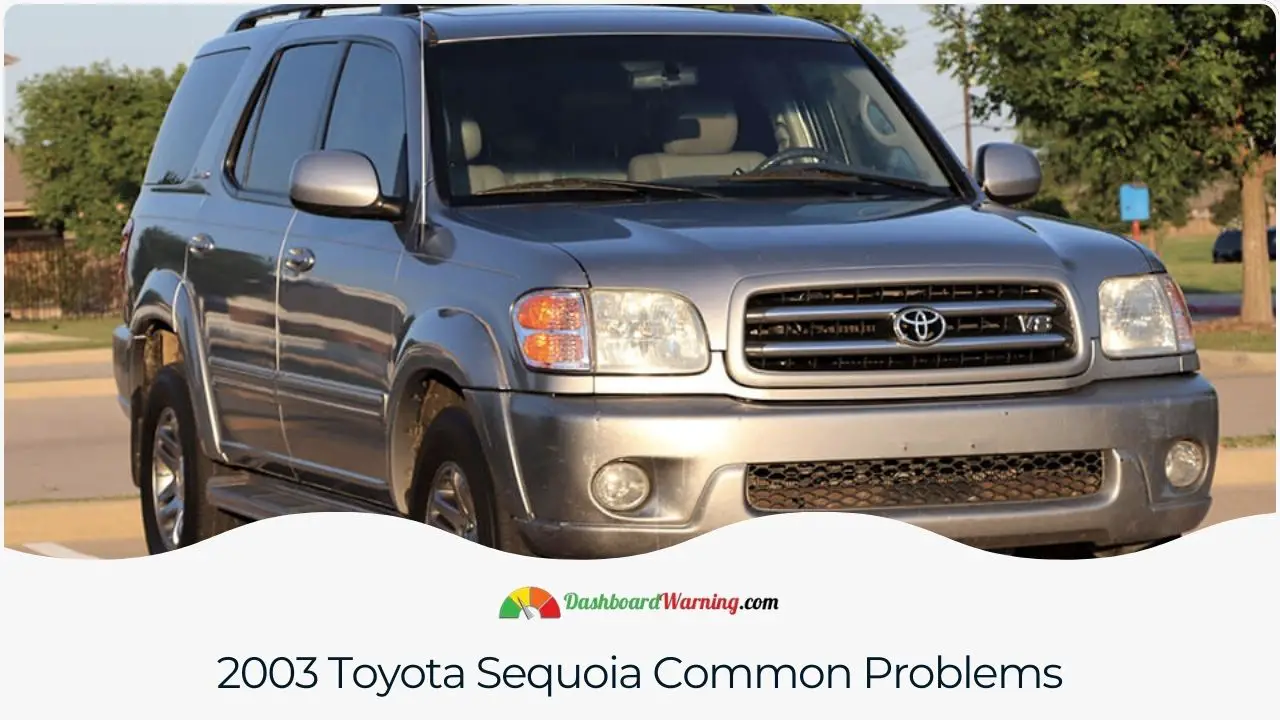
The 2003 Toyota Sequoia was met with significant negative customer feedback despite several improvements to the 2002 and 2001 models. The chief complaints from customers focused on paint quality, brake issues, and handle failure. In particular, many drivers reported that their anti-lock braking systems (ABS) lights began to flash wildly due to a brake problem.
Furthermore, many drivers also experienced problems with back hatch handles failing, leaving them unable to open or close them properly. Perhaps most concerning were reports that some vehicles had complete brake failures, leaving them unable to maneuver safely on the road.
Toyota worked hard to improve upon earlier model years of the Sequoia but failed for the numerous reasons above. Many customers continued voicing dissatisfaction over these issues, and it became clear that much work was still required before this model could be deemed a reliable vehicle for everyday use by families across America.
Furthermore, the model year has the following problems:
- Rust, Corrosion of the Frame
- The brakes won’t Engage While the Brake Light On
- VSC/Trac Light Comes On
The Toyota Avalon has had yet another disastrous model year and is not recommended for purchase.
2004 Toyota Sequoia Common Problems
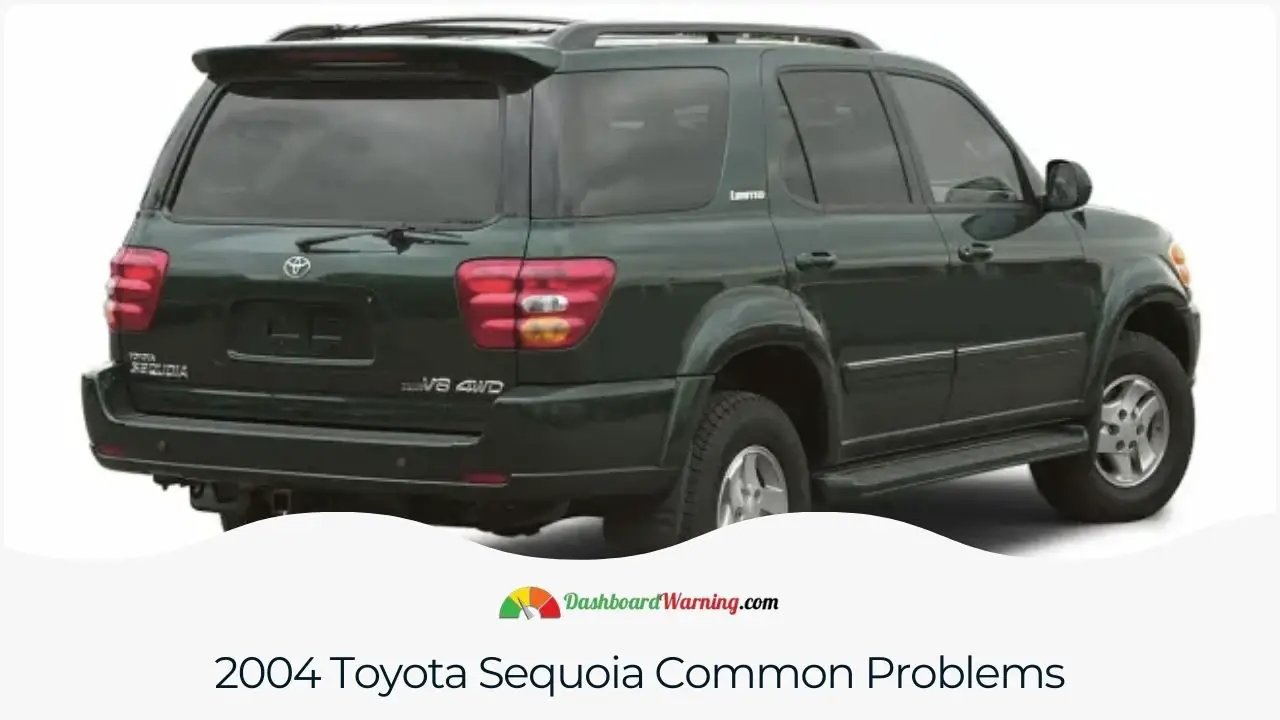
The 2004 Toyota Sequoia faced several serious issues that had plagued the model for years. Numerous customers reported that the back hatch handle often broke away, making it impossible to open the trunk. Drivers also experienced excessive wind noise while traveling at high speeds, while some power windows failed to function. This caused many buyers to be unsatisfied with their purchase and made owning this vehicle model somewhat frustrating.
Toyota responded quickly to these reports by introducing new features and modifications designed to address customer complaints in future models. However, those who purchased the 2004 Toyota Sequoia were still disappointed as they dealt with unreliable parts and an uncomfortable driving experience due to excessive wind noise. Although Toyota has improved on this model year's design flaws, customers should be aware of these issues when considering purchasing a used 2004 Toyota Sequoia vehicle.
In addition, customers reported the following problems:
- Traction Control System Failure
- VSC/Trac Light Comes On
- Vibration and Steering Shimmy
This model year of the Sequoia has disappointed customers, prompting many to recommend finding a different model year instead.
2005 Toyota Sequoia Common Problems
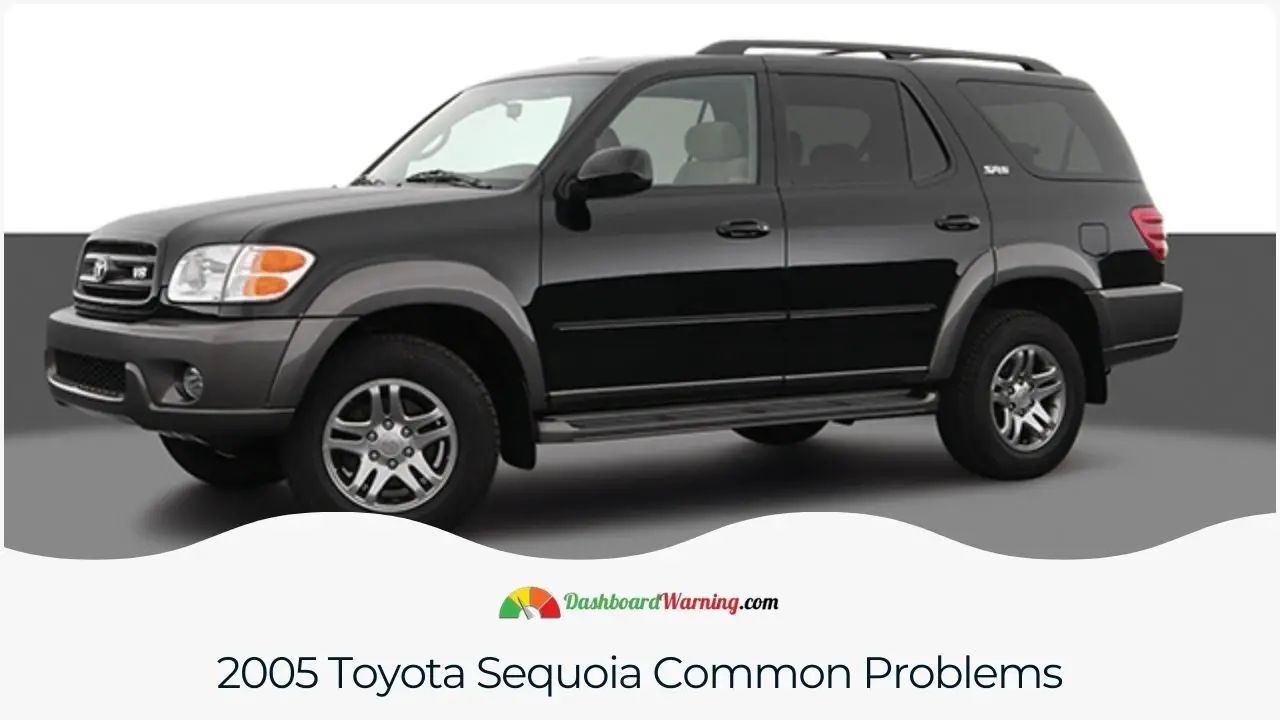
The Toyota Sequoia model years to avoid list includes all first-generation vehicles due to having experienced most of the issues presented in earlier models. One such issue is with spark plugs, which can fail without warning, stopping the engine while driving. It was found that pressing the gas pedal would not help; acceleration was nonexistent. Also, fuel systems could fail without indicator lights blinking as a warning sign.
This information highlights why it is important for potential buyers and owners of these model years to be aware and cautious when owning a Toyota Sequoia from this generation. Regular maintenance checks are essential when intending to purchase or own one of these vehicles to identify any possible issues before they become unmanageable or cause safety concerns while on the road.
Furthermore, the owner of this model-year vehicle has experienced the following problems:
- Brakes Pulsing on Their Own
- Dashboard Warning Lights Flashing
- Traction Service Control Light On
One should forgo purchasing a Sequoia from this model year to avoid future repair costs.
Which Toyota Sequoia Years Are Safe To Buy Used?
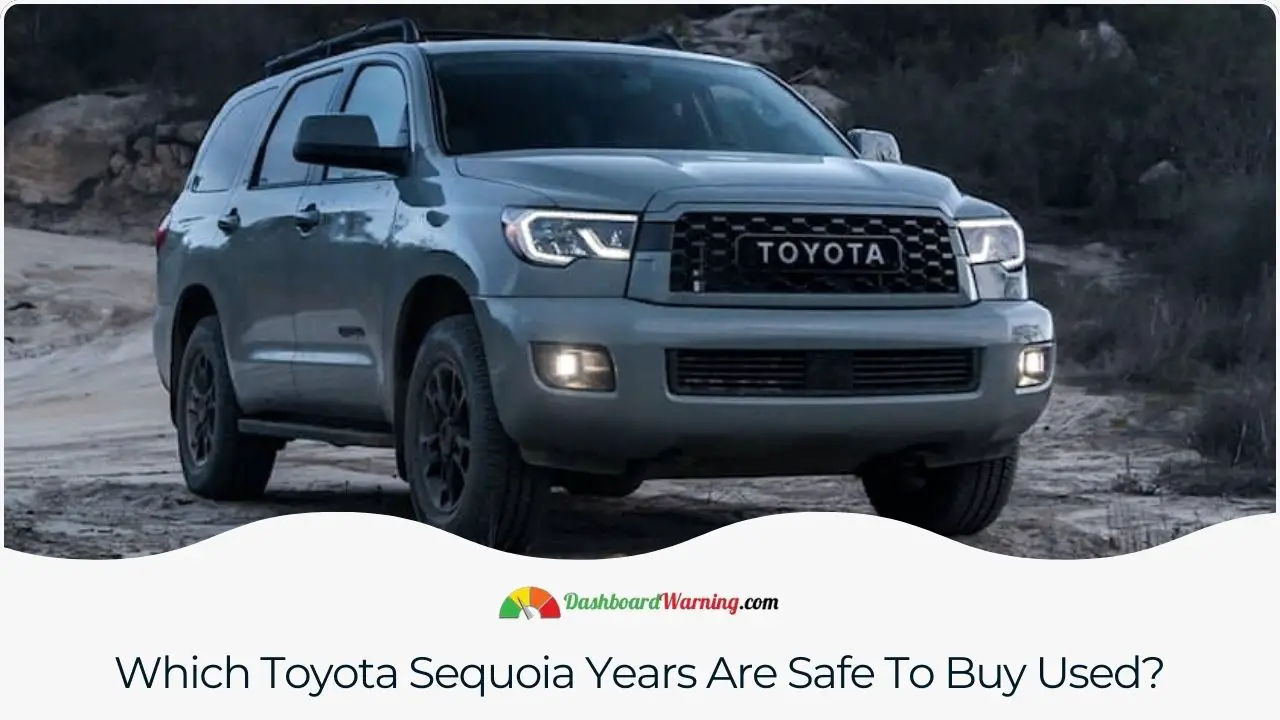
The Toyota Sequoia is a popular choice for those looking to purchase an SUV, but it's important to inspect the model thoroughly before you buy it. Our team has reviewed all models of the Toyota Sequoia and determined that they are safe to purchase so that you can confidently make your decision.
List of Toyota Sequoia model years that are the safest to buy:
- 2009 Toyota Sequoia
- 2010 Toyota Sequoia
- 2011 Toyota Sequoia
- 2012 Toyota Sequoia
- 2013 Toyota Sequoia
- 2015 Toyota Sequoia
- 2016 Toyota Sequoia
- 2018 Toyota Sequoia
- 2019 Toyota Sequoia
- 2020 Toyota Sequoia
- 2021 Toyota Sequoia
- 2022 Toyota Sequoia
The Toyota Sequoia 2009 and current model years, such as 2019, 2020, 2021, and 2022, have a single-digit complaint count, making them some of the safest models to buy.
Last Words
Potential risks must be considered when buying a used Toyota Sequoia. Knowing which years and models to avoid can help prevent costly repairs and safety hazards. It is highly recommended that buyers get a pre-purchase inspection done by a trusted mechanic before buying the vehicle.
If the buyer is set on buying a Toyota Sequoia, they should consider purchasing a newer model or one with known issues addressed. Additionally, certified pre-owned vehicles come with warranties and have been inspected by certified technicians; this could provide extra peace of mind for prospective buyers. When making such an investment, doing thorough research to make an informed decision pays off.
It is important for anyone considering a purchase to be aware of the potential problems and issues that could arise. The above guide outlines the most common issues and provides strategies to avoid them, helping buyers save time and money by avoiding costly repairs or safety hazards. These simple steps can help you make an informed decision when making your next purchase.
Was this page helpful?


More important content about Toyota
Toyota C-HR Years To Avoid
Toyota Venza Years to Avoid: Things to Know Before Buying
C1201 Code Toyota and Lexus | How Do I Fix?
Toyota Sienna Years To Avoid and Common Problems
Toyota Matrix Years To Avoid
Tips and Advice
Porsche Cayenne Years To Avoid
Subaru Legacy Years To Avoid - 5 Worst Years
Pt Cruiser Years To Avoid
Use 5w30 instead of 0w20 - Advantages and Disadvantages
Tractor Dashboard Symbols And Meanings
Suzuki Sx4 Years To Avoid - 5 Worst Years